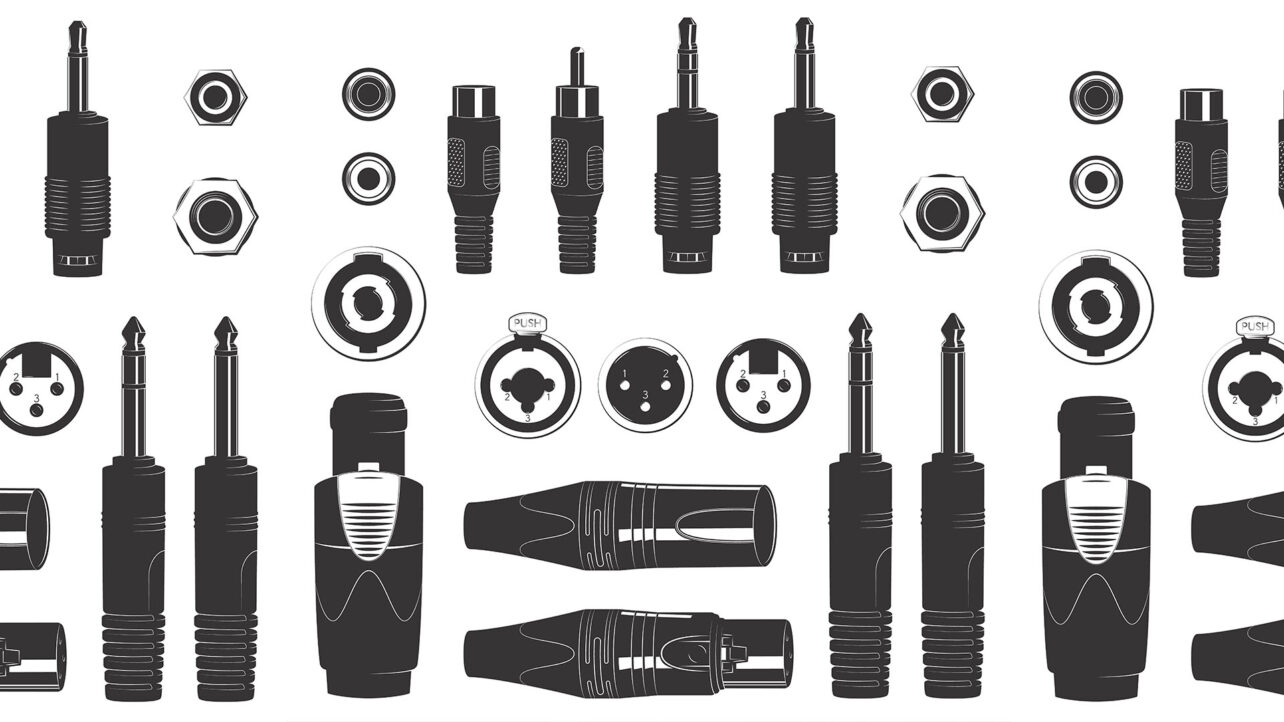Working within the filmmaking or audio industry requires knowledge of what cables are needed for various scenarios. Some audio cables have different connectors, primarily a jack connector or an XLR. But what are the differences? Do they affect the quality of the audio? Are XLR and Jack connectors required for certain audio situations? This guide explores the features and differences between the two most commonly used connectors in audio
Audio Cables
In the filmmaking industry, capturing sound is as important as capturing visuals. An array of microphones are used during shoots and in post-production, and through the capture of said audio, the most common types of electrical cables are XLR or Jack cables—not forgetting wireless receivers, but that’s for another article. They both serve to transmit audio to various equipment, including microphones, interfaces, speakers, or mixers. However, XLR and Jack cables have different roles within the audio transmission.
The XLR Cable
Developed in the 1940s, XLR or balanced cables were created by James H. Cannon, founder of Cannon Electric. XLR stands for External Line Return and consists of 3 pins in a triangular configuration: one ground wire and two signal carriers. The signal pins carry a copy of the signal in reverse polarity, canceling out any interference signals and leaving a clean signal that results in better sound quality.

Initially, XLR connectors were primarily used in the professional audio industry, transmitting balanced audio signals between microphones, mixers, and amplifiers. They quickly gained popularity due to their durability, reliability, and ability to minimize interference and noise in the signal.
Over the years, XLR connectors have evolved and are now used in various applications beyond the professional audio industry, including lighting systems, video production, and stage automation. Today, XLR connectors are the standard for transmitting balanced audio signals in professional audio and video production.
LEWITT Audio has an insightful video on XLR, which explains the intricate details of this fantastic piece of gear.
Benefits of an XLR Cable
XLR cables are designed to transmit high-quality, low-noise audio signals. They are commonly used in professional settings like recording studios and live sessions and are known for their durability. They’re less prone to wear and tear and less likely to malfunction.
Known as balanced cables, XLRs transmit balanced audio signals with two separate conductors for the positive and negative signals and a ground conductor. This design minimizes interference and noise in the audio signal, making it more suitable for noisy environments and long cable runs.
XLR cables are versatile. They can be found in microphones, mixers, amplifiers, and lighting systems. They come in different lengths and can easily be extended using adapters for more flexibility.
XLR Cables in Filmmaking
In the filmmaking industry, XLR cables are indispensable. They’re used in many crucial scenarios due to their superior quality. Recording dialogue often involves XLR cables as they ensure clear audio and accuracy within the recording. They also aid the syncing process between the sound recorder and camera. XLR cables are frequently used for this pivotal step in filmmaking.
Recording sounds in various locations demand a robust cable, an inherent characteristic of XLR cables. Being outdoors in challenging conditions exposes them to potential wear and tear. XLR cables are built to withstand these circumstances.
The Jack Cable
The Jack cable, also known as an unbalanced cable, dates back to the early 19th century. They were originally used to transmit electrical signals between telegraphy machines.
In the early 20th century, jack connectors were adapted for audio applications and have since become a staple in the consumer audio industry. They are widely used to connect headphones, portable speakers, and musical instruments to audio devices such as phones, laptops, and portable music players.

Jack cables come in different sizes. The connectors on the end can range from a 1/4 inch TRS (tip-ring-sleeve) to a 3.5mm TRS. The 1/4-inch TRS is widely used in professional audio equipment, such as studio monitors, while 3.5mm TRS connectors are used in consumer audio equipment like headphones.
Dan Baker provides an in-depth explanation of the uses and differences between Jack cables in his video.
Benefits of a Jack Cable
One of the main benefits of using jack cables is their affordability. They’re generally less expensive than XLR cables, making them cost-effective for consumer audio applications.
Jack cables are common in the audio industry, so obtaining one isn’t difficult. They can be found in virtually any electronics store, both in-store and online. Furthermore, they are very versatile. Available in both 1/4 inch and 3.5mm variants, this versatility broadens the range of audio applications. They are also compatible with various devices, including phones, microphones, laptops, monitor speakers, and musical instruments.
Jack cables are smaller and, therefore, more portable than XLR cables. A jack cable can be easily carried around, taking up virtually no space.
Jack Cables in Filmmaking
While XLR is widely used in professional settings, the jack cable is also important. In filmmaking, jack cables can connect a microphone to a camera or mixer. The only difference is that a jack cable is unbalanced, transmitting signals over a single conductor and a ground wire. This can lead to possible noise interference. However, these cables may be preferred over XLR cables due to their lower cost.
Headphone users on set would use a jack cable. Headphones use only a jack connector, available in 1/4 inch and 3.5mm sizes. The two have no actual quality difference; it depends on your equipment. It’s always a good idea to carry a 1/4-inch adapter, just in case!
Now that you understand the functions of each cable, you can confidently apply this knowledge to your practice. Using Jack cables is a great place to start if you’re on a budget. But if you’re looking for accuracy and durability, an XLR cable has you covered.
For more on audio, check out these articles:

